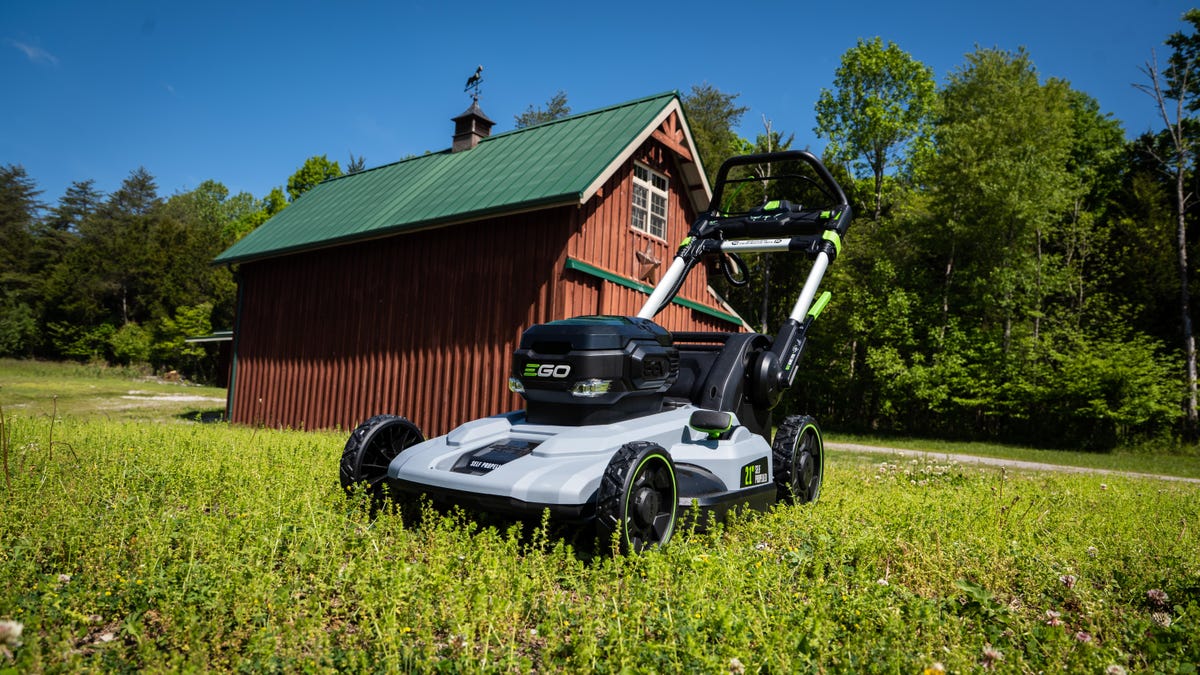
For decades, lawn mowers were gas-guzzling and emissions-spouting beasts that were hard to pull-start and loud enough to wake up the neighborhood. But a new generation of electric-powered models is changing the lawn care game.
Though gas-powered models still dominate the aisles of big-box stores, a growing number of affordable electric mowers now provide a compelling alternative, whether your priority is power, convenience or sustainability. If you’re in the market, you have more options than ever — and the best electric mowers are now good enough to rival their gas-powered competitors. We’ll break down the pros and cons of electric and gas mowers to help guide your buying decision.
Pro: Electric lawn mowers are quieter
Lawn mowers are loud. While standard gas-powered mowers usually operate at 95 decibels — equivalent to the racket made by a motorcycle revving its engine — electric mowers max out at around 75 decibels on average, closer to the din of a washing machine. If you live in a neighborhood, an electric mower is the less disruptive option.
Con: Shorter run times
Once you start mowing, you want the job done in one fell swoop — but that might not be possible with an electric lawn mower, especially if you have a significant plot of land. Electric models top out at between 45 to 60 minutes per charge, which should be enough to handle up to half an acre of grass.
Some electric mowers, like this corded Sun Joe “hover” model will provide unlimited mowing time, as long as you have a power source or long enough extension cord. Most electric models run on batteries, however, and offer run times ranging from 20 to 45 minutes. If it takes you longer to mow your yard, that’s going to be a problem — or a delay, at least, while you recharge. You can keep a second battery on hand, but that’ll require an additional purchase.
Pro: Easier to maneuver and less maintenance
A gas-powered mower requires periodic maintenance, including the eventual replacement of a spark plug, oil filter and air filter. Electric mower components, however, require less regular servicing, which should increase your savings over the long term. In this way, an electric model can be more economical than a gas-powered counterpart.
Most electric mowers are also relatively lightweight, making them easier to navigate across your lawn and maneuver around tight corners. Our top electric pick, the EGO Power Plus, weighs 62.6 pounds — making it considerably lighter than the Craftsman M250, which weighs in at a hefty 90 pounds. Though the self-propelled engine improves maneuverability when you’re cutting the grass, the mower is still heavy to push.
Electric models may not be ideal for larger lawns or lawns with hills and slopes, but they’re great for regular, suburban lawns.
Pro: Better for the environment
Gasoline-powered engines produce a surprising amount of carbon emissions and a slew of pollutants. According to the California Air Resources Board, one hour of mowing generates the same pollution as driving a car for 300 miles. And the Environmental Protection Agency says that gas lawn mowers contribute the majority of non-road-related air pollution generated nationwide.
Electric lawn mowers are a much cleaner, energy-efficient alternative. The Electric Power Research Institute notes that if we replaced half the gas-powered lawn mowers with electric models, it would reduce the same amount of emissions as removing 2 million vehicles from the road. This is certainly an important factor to consider when purchasing a new mower.
Gas-powered lawn mowers contribute the majority of non-road-related air pollution generated nationwide, according to the EPA. Electric models are much more eco-friendly.
Con: Electric lawn mowers aren’t as powerful
Lawn mower power is measured by a torque rating, which quantifies the driving force behind the blade’s rotation. The higher the torque rating, the more powerful the chopping motion — and the less likely the mower is to get stuck or caught up on a clump of grass or other obstruction.
The average electric lawn mower has between 2 and 2.5 pound-feet of torque. The average of a gas-powered mower is between 4.5 and 8.75 pound-feet, which is about three times more power. This means a gas-powered mower will make it easier to tackle challenging terrain like hills and dips and slants in your yard. And homeowners with larger lawns or yards with hills or slopes may require heavier duty equipment like a riding lawn mower. While most riding lawn mowers are gas-powered, there are electric ones on the market, like this Ryobi model.
Pro: They can be less expensive
If you’re in the market for a new mower, a basic electric mower is less expensive than a basic gas mower.
Electric models can start as low as about $100, the price for the Sun Joe hover model tested by CNET experts, but that’s a particularly low-priced outlier. Most push-from-behind electric models can cost anywhere from $250 to $550.
Prices for gas-powered mowers can start at around $200-$250. But the most popular lawn mower brands have basic gas-powered models that fall into the $400 to $1,00 price range. Certain gas riding lawn mowers can even reach up to $2,500.
Final thoughts
Overall, the lawn mower market continues to expand, with an array of diverse offerings. For homeowners with larger yards, gas-powered mowers may still be the best fit, since they have the durability and power to tackle bigger lawns with ease. That’s if you’re comfortable with the environmental impact gas mowers have.
If you want to maintain a midsize yard, reduce your carbon footprint (and even save some money) in the process, then an electric lawn mower is probably the best for your needs. Either route you take can help you gain a healthy-looking lawn that boosts the curb appeal and value of your home.
More for your lawn:
